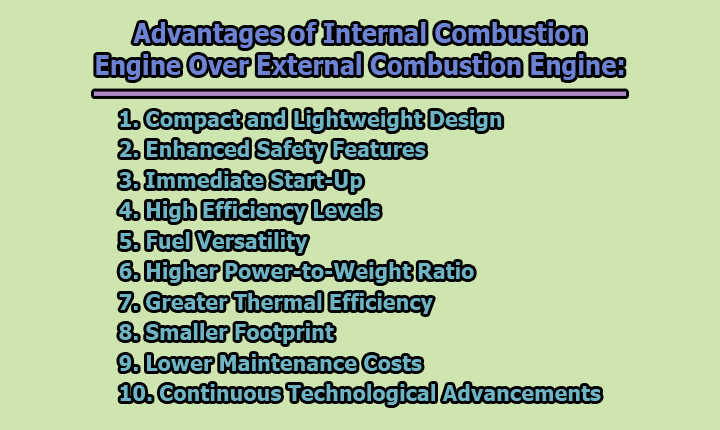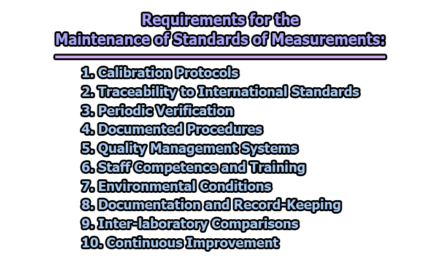Advantages of Internal Combustion Engine Over External Combustion Engine:
The evolution of engines has played a pivotal role in shaping the landscape of transportation and industrial machinery. Two prominent types of engines, internal combustion engines (ICE) and external combustion engines (ECE), have been at the forefront of this technological revolution. Here are some of the essential advantages of internal combustion engine over external combustion engine:
1. Compact and Lightweight Design: Internal combustion engines (ICE) are celebrated for their compact and lightweight design, a stark contrast to the bulkier and heavier external combustion engines. This inherent advantage facilitates their integration into a wide array of vehicles, ranging from nimble scooters to compact cars. The reduced weight not only enhances maneuverability but also contributes to fuel efficiency, a critical consideration in the ever-evolving automotive landscape.
2. Enhanced Safety Features: Safety is paramount in any engine design, and internal combustion engines shine in this regard. The combustion process occurs within the engine itself, minimizing the risks associated with external combustion engines that rely on highly pressurized steam in a separate boiler. The absence of external steam pressure significantly reduces the likelihood of accidents, making internal combustion engines a safer choice for various applications.
3. Immediate Start-Up: One of the notable advantages of internal combustion engines is their immediate start-up capability. Unlike external combustion engines, which often demand a considerable amount of time to initiate the combustion process, internal combustion engines are primed to deliver power almost instantly. This characteristic is particularly valuable in applications requiring prompt response, such as emergency generators or vehicles where quick acceleration is essential.
4. High Efficiency Levels: Efficiency stands as a hallmark of internal combustion engines, outperforming their external combustion counterparts. While external combustion engines typically operate at an efficiency level of around 20%, internal combustion engines can achieve impressive levels of up to 40%. This heightened efficiency translates to better fuel economy, reduced environmental impact, and increased overall performance, reinforcing the widespread adoption of internal combustion engines across diverse industries.
5. Fuel Versatility: Internal combustion engines exhibit remarkable versatility concerning the range of fuels they can utilize. From traditional gasoline and diesel to natural gas and eco-friendly biofuels, internal combustion engines offer unparalleled flexibility. This adaptability is a strategic advantage over external combustion engines, which are often restricted to specific fuel types, providing industries with greater freedom to choose fuels based on economic, environmental, and strategic considerations.
6. Higher Power-to-Weight Ratio: ICE boast a superior power-to-weight ratio compared to their external combustion counterparts. This means that, for a given weight, internal combustion engines can deliver more power. The efficiency in power generation allows internal combustion engines to excel in various applications where a high power output relative to the engine’s weight is crucial. This advantage contributes to improved performance, especially in vehicles and machinery where optimizing power and weight is essential.
7. Greater Thermal Efficiency: Internal combustion engines exhibit higher thermal efficiency, converting a larger percentage of fuel energy into mechanical work. The combustion process in ICEs is more controlled and focused, resulting in less wasted energy in the form of heat. This heightened thermal efficiency not only enhances the overall performance of the engine but also contributes to reduced fuel consumption and, consequently, lower emissions. The environmental friendliness of internal combustion engines adds to their appeal in the era of sustainable and eco-conscious practices.
8. Smaller Footprint: The compact design of internal combustion engines translates into a smaller physical footprint. This advantage is particularly crucial in applications where space constraints are a concern. Vehicles, machinery, and other systems benefit from the reduced spatial requirements of internal combustion engines, allowing for more flexible integration and utilization in environments where space is at a premium.
9. Lower Maintenance Costs: Internal combustion engines generally incur lower maintenance costs compared to external combustion engines. The simplicity of the internal combustion engine’s design and its fewer components contribute to reduced wear and tear, resulting in less frequent and less expensive maintenance requirements. This financial advantage enhances the cost-effectiveness of internal combustion engines over their operational lifespan, making them an attractive choice for industries seeking efficiency and affordability.
10. Continuous Technological Advancements: The world of internal combustion engines is marked by a relentless pursuit of innovation and technological advancements. Ongoing research and development efforts focus on enhancing efficiency, reducing emissions, and improving overall performance. The adaptability of internal combustion engines to incorporate cutting-edge technologies, such as electronic fuel injection and hybrid systems, ensures their continued relevance and competitiveness in the ever-evolving landscape of combustion-powered engines. The commitment to progress cements internal combustion engines as a driving force in the future of transportation and industrial applications.
In conclusion, the advantages of internal combustion engines over external combustion engines are multifaceted and contribute significantly to their dominance in the realm of modern transportation and machinery. The compact and lightweight design, enhanced safety, immediate start-up capability, and higher efficiency make internal combustion engines the preferred choice for a wide range of applications. As technology continues to evolve, the relentless pursuit of innovation in internal combustion engines ensures their continued relevance in shaping the future of mobility and industrial progress.

Assistant Teacher at Zinzira Pir Mohammad Pilot School and College










